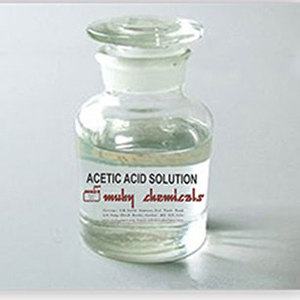
CAS Number: 64-19-7,
Molecular Weight: 60.05,
Chemical Formula: CH3CO2H,
EINECS EC Number: 200-580-7,
FEMA: 2006
1 mL of 1 M sodium hydroxide is equivalent to 60.1 mg of C2H4O2.
Congealing temperature: not lower than 15.6 .
Limit of nonvolatile residue: Evaporate 20 mL in a tared dish, and dry at 105 for 1 hour: the weight of the residue does not exceed 1.0 mg.
Chloride: Dilute 1.0 mL with 20 mL of water, and add 5 drops of silver nitrate. No opalescence is produced.
Sulfate: Dilute 1.0 mL with 10 mL of water, and add 1 mL of barium chloride. No turbidity is produced.
Heavy metals: To the residue obtained in the test for Limit of nonvolatile residue add 8 mL of 0.1 N hydrochloric acid, warm gently until solution is complete, dilute with water to 100 mL, and use 20 mL of the solution: the limit is 5 ppm.
Readily oxidizable substances: Dilute 2.0 mL in a glass-stoppered vessel with 10 mL of water, and add 0.10 mL of 0.10 N potassium permanganate: the pink color is not changed to brown within 2 hours.